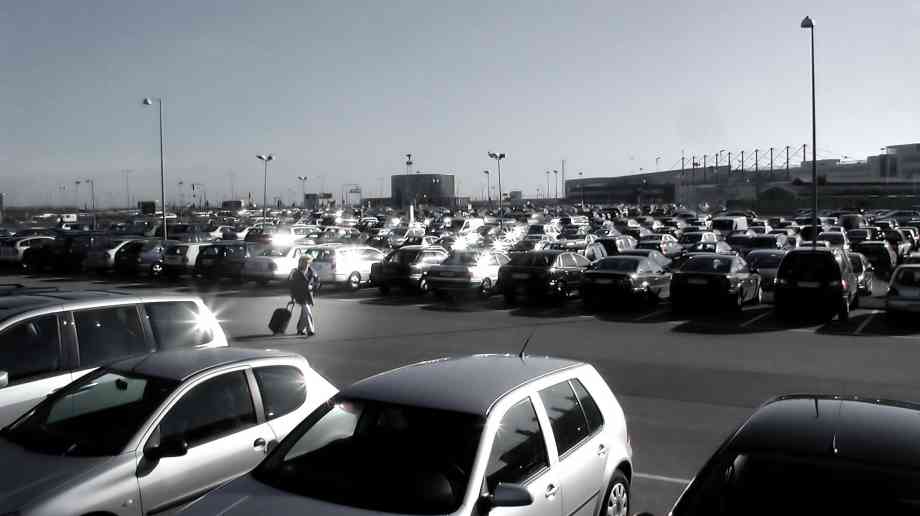
Taking a look at the future of parking
As we await the outcome of yet another government consultation relating to parking, David Smith of the British Parking Association looks back over the last few years and then points the way forward to where the profession is heading and what this means for the education sector.
Back in 2014, the British Parking Association (BPA) was busy lobbying against proposals to ban the use of CCTV and ANPR by local authorities for parking enforcement, including the use of cameras for parking enforcement outside schools which could potentially put children’s lives at stake.
CCTV and ANPR cameras are vital tools to help improve road safety and especially so for enforcement outside schools, bus stops and other locations where there are road hazards. Indeed each council has a network management duty as stated in the Traffic Management Act 2004 to manage their road network, including congestion outside schools. In recent years there have been many examples where government has funded through grants the delivery and implementation of such systems.
The BPA argued that the use of CCTV and ANPR cameras outside schools is in place to ensure the safety of the local community. Cameras are commonly deployed at the request of the local community and school children themselves who want to be protected from selfish and often dangerous parking by a tiny minority. Upon consulting with our membership on this point, an overwhelming majority of our responses confirmed that their local communities particularly appreciated and praised the use of CCTV cameras when themselves and their children’s’ safety was concerned. A key example of this positive use of CCTV is Oldham Council; after an 11 year old school girl was nearly hit by a car outside her school in 2012, she began to lobby the council to provide more enforcement of restrictions outside schools. The council responded by enlisting the help of all the schools in Oldham to launch a competition to name the very first School Safety Vehicle; after over 700 entries were submitted, Oscar (Oldham Safety Car) began to enforce outside schools, reducing the number of injuries and raising awareness of the serious problems that obstructive parking and congestion are causing on a daily basis in reducing visibility for children crossing the road.
Although government agreed to retain the use of CCTV outside schools, as well as at bus stops, in bus lanes and on red routes, they failed to carry out an equalities impact assessment for these proposals, placing vulnerable road users such as wheelchair users and parents with buggies at risk when crossing road junctions protected by yellow lines.
Clarity through integration
Fast forward to 2016 and we currently await the outcome of further government scrutiny, this time by the Department for Communities and Local Government (DCLG) into the private parking sector. We look forward to a discussion about the impacts of their response at the BPA’s forthcoming Parking Summit, to be held early in May. Regardless of what’s in the detail, there is a strong feeling that the view from the top in government is changing and that a number of issues relating to the management of parking require urgent attention. Clarity for motorists is what is needed and consistency wherever they choose to access parking services is surely another major objective. Already in many areas, simple ideas using software and data across connected devices are helping the public make better and more cost effective travel decisions.
A vital aspect of current developments is the increase towards integration, not just in parking but throughout the transport profession. To be part of these developments, the parking profession must be at the forefront of future mobility and be ready to bring in its expertise and knowledge in new and innovative ways to improve the customer’s experience.
New technology has significantly improved the offering to motorists, best illustrated by the use of mobile phone parking which enables motorists to be alerted to time expiry and remote topping up of time. In many other areas of government activity new technology is being embraced positively, for example in the Cabinet Office’s ‘Digital by Default’ programme and this needs to be carried through into parking management.
A classic SWOT analysis shows that there are tremendous opportunities presented by the implementation of technology and new business models and the parking community is starting to ready itself for the impacts and challenges these will bring. Threats to accepted ways of doing things are appearing all the time.
The future of parking
Recently, the BPA has undertaken research into the future of parking, exploring how the profession can become active rather than passive. We want to identify the major trends of future mobility concepts, analyse their prospects for the short, medium and long term, finding possible development areas for the parking profession within those trends. The BPA has a key role to play as an enabler and we believe that we can help by communicating opportunities to members.
The first fruits of our research will appear early in 2016 but until then, consider the latest figures from the Office for National Statistics who recently stated that the UK’s population is expected to increase by 4.4 million in the next decade, before reaching 70 million in 2027.
Clearly this increase will add to the already significant challenges faced by public services, already under huge pressure because of budgets cuts. New ideas and innovation can help to realise cost savings. New methods of collecting and analysing data can provide better insights into the way that customers access and use travel services, including parking.
The BPA is holding a meeting of the Future of Parking and Intelligent Mobility Group in February, with an action to come away with a clear direction. Taking the lead from our research outcomes and building on our relationship with Loughborough University, we will be exploring proposals and suggestions for projects to submit bids for funding to Innovate UK. Collaborating with Academia is a vital and essential part of the application process. The BPA have for a number of years established strong links with Universities, including Transport Studies Groups, and we are pleased to have received a number of strong funding applications ourselves for our John Heasman Bursary and the Prize fund.
The John Heasman Bursary was set up in 2006 in recognition of the contribution that John Heasman (former President and Director General of the BPA) made to the parking sector and, in particular, to the formation of the BPA, with the express aim to promote research and encourage professionalism in the parking sector.
This Bursary is being offered to encourage research in parking. The parking and traffic management sector is an under‑researched area, and one which covers a vast range of subjects including: the design and construction of car parks, the effect that parking provision has on traffic congestion and the urban landscape, the effective management of kerb space, and the many media and public concerns that managing on and off street parking raises. Recent conversations with our University contacts have increased our understanding of the subjects and research projects their students want to undertake so that we can better tailor our Bursary to fit with University timelines, as well as research projects and themes. This year we will also be promoting the Bursary in a much more transparent way using social media and targeted communications which clearly define timelines and entry conditions.
Of course, universities and colleges work tirelessly to deliver an outstanding educational experience and, for many higher and further education organisations, that effort is reflected in their provision of parking. This dedication is exemplary, and it is high-time that it was recognised. The BPA plans to celebrate excellence through its new audited accreditation for universities and colleges, the Professionalism in Parking Accreditation (PiPA). Excellence in parking is a product of organisational professionalism, and this concept lies at the heart of PiPA. PiPA is for organisations that wish to demonstrate the highest standards of professionalism in parking. Although initially developed for the healthcare parking sector, we are now extending this into other sectors. The BPA worked with the Department of Health in updating the recently published parking guidelines for NHS Trusts. The guidelines recognise the importance of professionalism in delivering parking services and providing a high standard of customer care. Indeed it is customers who are increasingly in control, ever more demanding about when they choose to do things and how and when they spend their money, by what means and with whom. Service providers must respond to those needs and the parking profession is no different. There is no doubt that the pace of change we are currently seeing is going to have a huge impact on how businesses package and offer their services. It is imperative that we place the customer’s needs at the heart of everything we do and ensure we are designing services for them, that are useful and that they want and need.
Real change in how we design, deliver and access the transport network is happening now, with best practice examples everywhere to be seen. This is a golden opportunity to grasp that chance and 2016 will surely be the year when we all work together to design solutions that deliver the best outcome for the customer.
Further Information
www.britishparking.co.uk
Latest News
29/10/2025 - 09:19
Estimated data from the Department for Education reveals that 470,000 pupils under 16s use local authority funded transport to get to school.
28/10/2025 - 09:29
Timeline set for removal of Reinforced Autoclaved Aerated Concrete
27/10/2025 - 14:37
The charter aims to make food education for children and young people a priority and act as a catalyst for change, improving provision in Bristol and beyond.
27/10/2025 - 09:30
Both unions announce formal support of NAHT’s legal action against Ofsted and its proposed new framework.
27/10/2025 - 09:14
A new Child of the North (CotN) report warns that the special educational needs and disabilities (SEND) system faces ‘a worsening crisis’.







